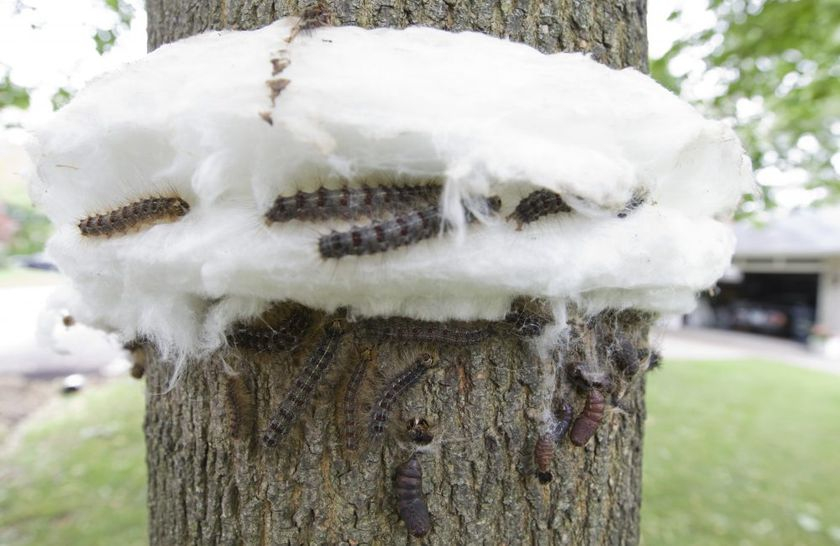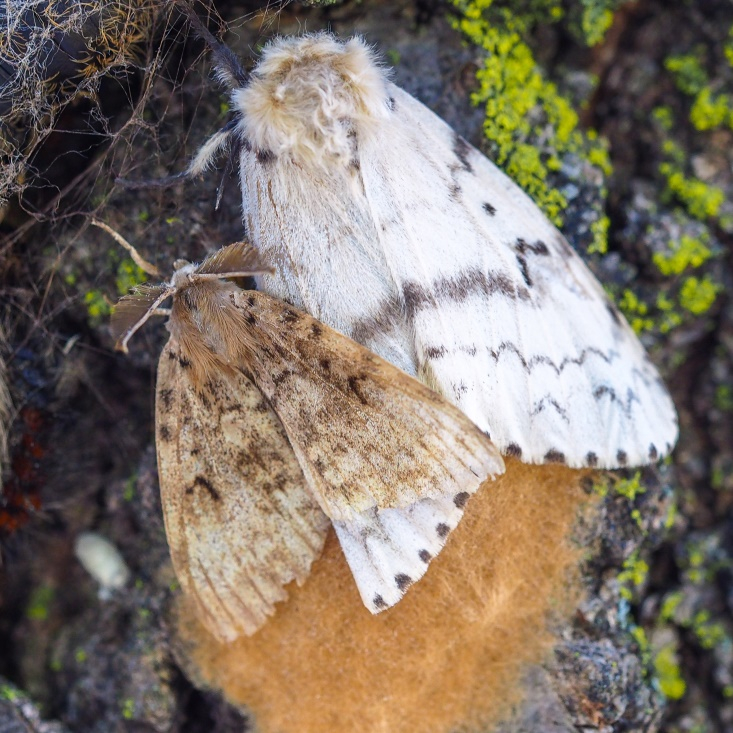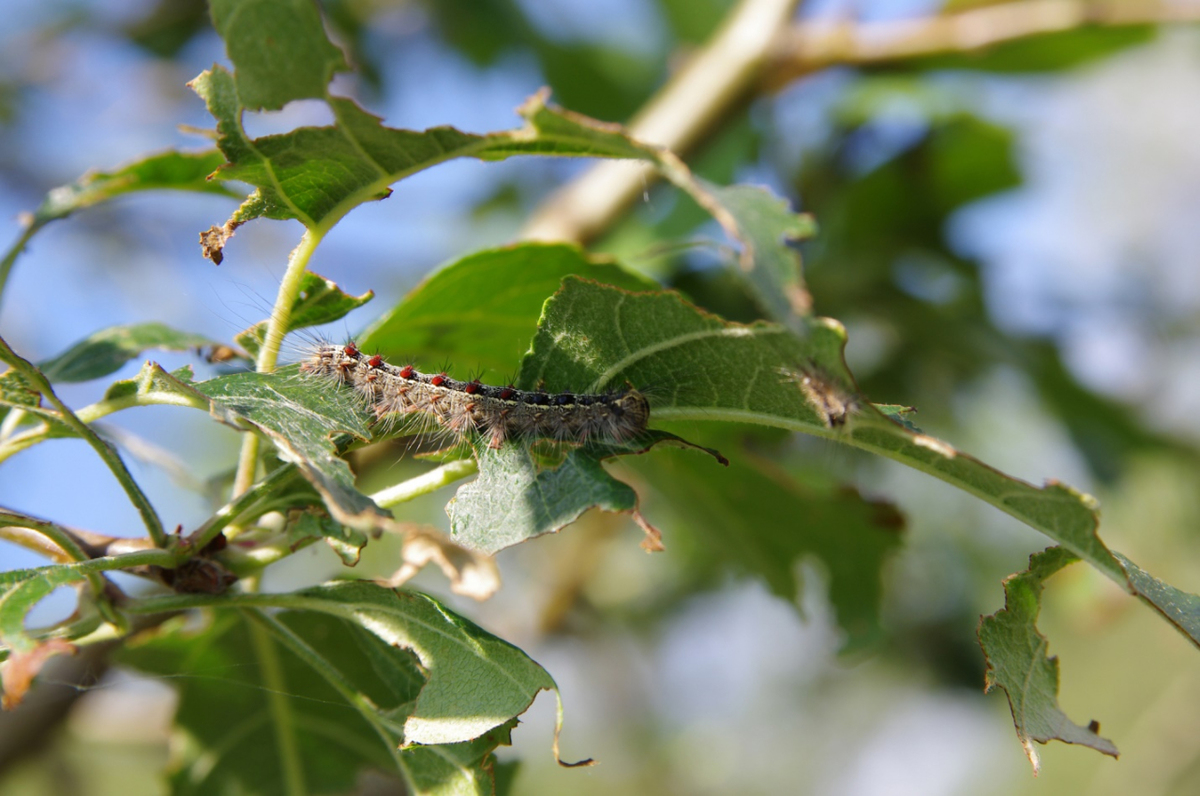Spongey (Gypsy) Moth
Characteristics
Spongey (gypsy) moth is an invasive species that is native to Europe and now resides in Ontario. This moth causes extensive defoliation by feeding on various species of trees throughout Southern Ontario. Susceptible species include oak, birch, poplar, maple, beech, pine, and spruce.
The mature larvae are 50mm long with a hairy, dark coloured body. They have two rows blue and red spots on their backs, and are covered in tiny hairs. Once mature, the male moths are light brown with slender bodies and the female moths slightly larger, and white.
Spongey (gypsy) moth begin their lifecycle as white egg masses on the bark of trees during the winter. After hatching in the spring, larvae climb up the trees to feed on the new foliage. When the caterpillars are young, they will mainly feed during the day. As they mature larvae will feed during the night, making them harder to detect to an untrained eye. After larvae finish feeding in July they will turn into moths and mate. Spongey (gypsy) moth outbreaks typically occur every 7 to 10 years.
  
Signs & Symptoms
Spongey (gypsy) moth egg masses will be visible on the trunks of trees in late winter. In the early summer, infested trees will have chew marks on leaves. In severe cases, trees will loose all their foliage from feeding caterpillars.
Larvae will congregate on the main trunks of trees during hot, sunny days. Towards the end of their lifecycle as larvae, spongey (gypsy) moth can become 2 inches long.
Treatment & Recommendations
It is rare for urban trees to die from spongey moth damage. Even in severe cases most deciduous trees will re-grow their leaves next season.
Spongey moth egg masses can physically be removed and destroyed to help prevent caterpillar infestation. Insecticides applications can be applied throughout June and July to protect ornamental trees and shade trees.
Talk with one of our arborists if your tree is displaying signs or symptoms of spongey moth damage.
|